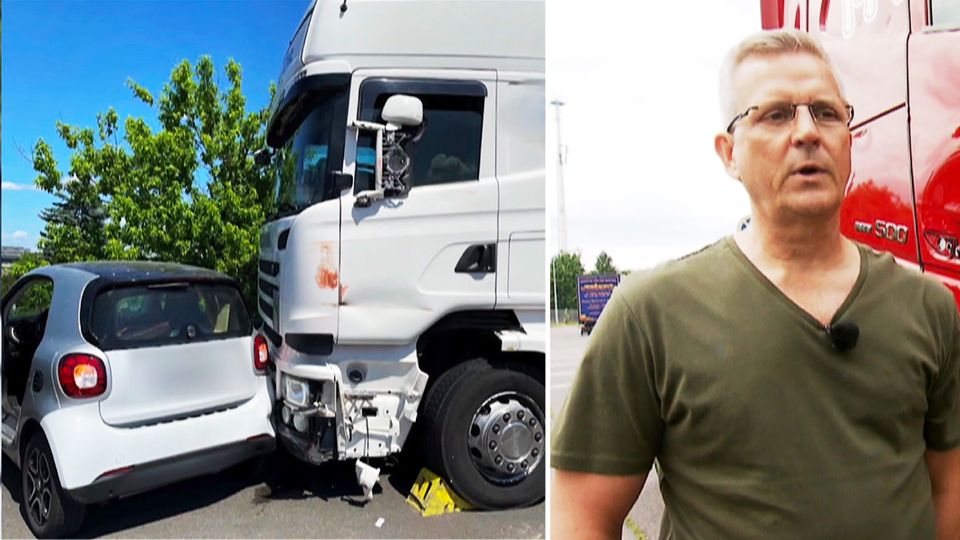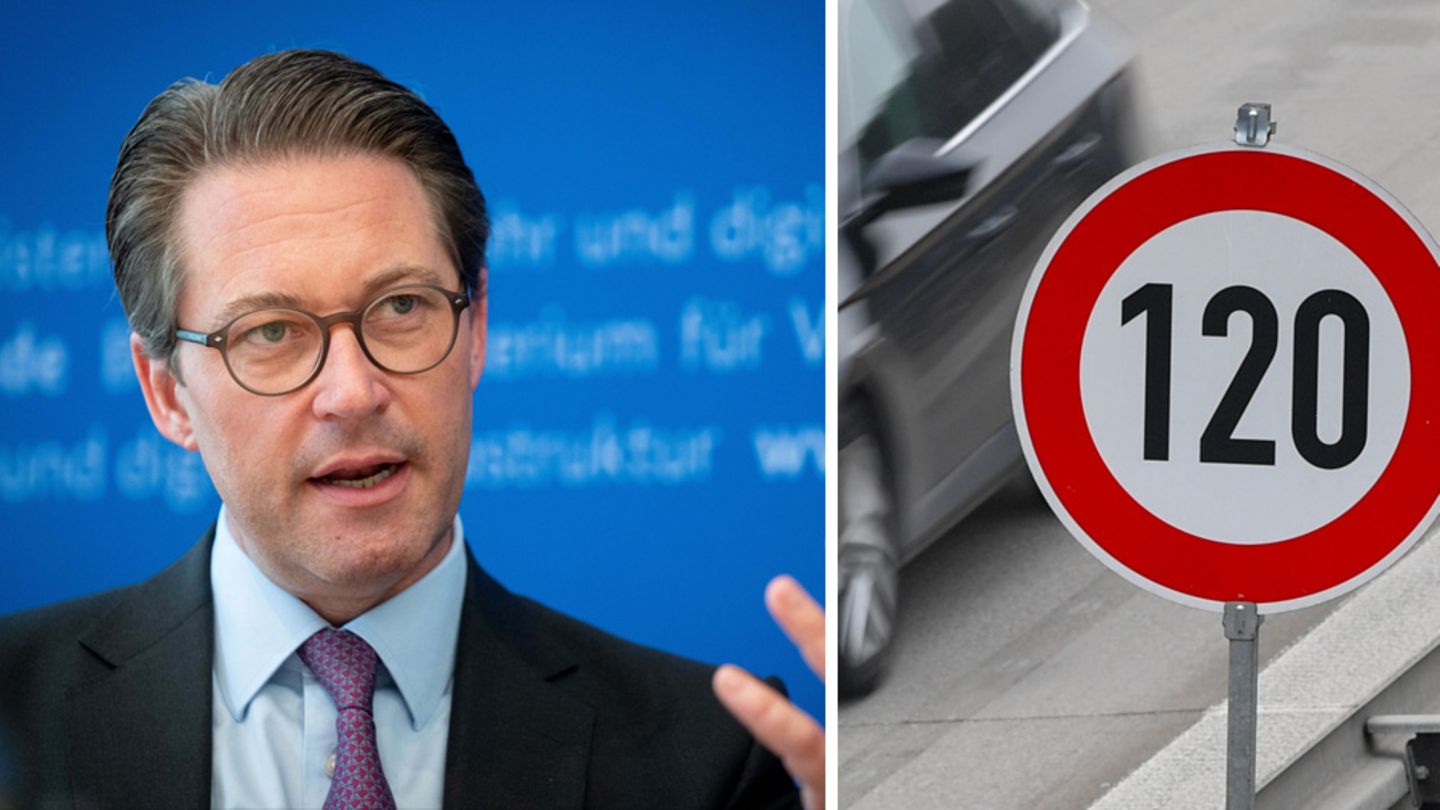The word alone reliably causes heated debates: speed limit. The parties have clearly positioned themselves again – will the voters give a signal in autumn? There is also something happening beyond the autobahn.
It is a political long-runner with built-in excitement potential – and has already arrived in the federal election campaign, edition 2021: Should a general speed limit come on German autobahns after all, which has been bitterly debated for decades? The SPD, the Greens and the Left are campaigning for it – the Union, FDP and AfD are still strictly against it. This traditional front position has always led to the fact that nothing has changed and the proverbial free ride continues to apply. Can the big issue of climate protection possibly trigger surprising movement this time?
Federal Transport Minister Andreas Scheuer drew a clear line of defense for the election campaign: “The argument for a general speed limit is a political instrument of war, for some even a fetish,” said the CSU politician of the German Press Agency in Berlin. “Citizens can choose whether they want freedom of mobility – or restrictions and bans. And the Greens are right at the front.”
Andreas Scheuer vs. German Environmental Aid
Proponents of a speed limit, such as Deutsche Umwelthilfe, argue that in order to achieve the climate targets for 2030, massive savings in carbon dioxide (CO2) must be made, especially in traffic. And the measure with the highest potential for savings is a speed limit of 120 kilometers per hour (km / h) on motorways, 80 km / h outside the city and 30 km / h in town. In addition, a speed limit massively increases road safety through fewer accidents.
Scheuer countered: “The German autobahns are the safest roads in the world. We tend to have problems with road safety on country roads, that is what our focus must be.” In general, there are already speed limits on around a third of the motorway network, the average speed is 117 km / h. The system of the recommended recommended speed of 130 has proven itself.
Then there is the technological development: “With alternative drives, automation and autonomous driving, the average speed will drop anyway,” said Scheuer. “A driver of an electric car knows exactly: If you change the pace too often or drive too high, you will quickly run out of range of your car.”
Laschet is also against the speed limit
Even autonomous driving with computer-controlled cars will not be permitted at top speed. “In addition, there is more intelligence in the vehicle: soon the speed specifications will not be on the metal plate, but in the car itself: The driver will be given much more information, for example warned of weather conditions such as heavy rain.”
With a view to the climate, CDU boss and Union chancellor candidate Armin Laschet had thrown off a general limit of 130. “Why should an electric vehicle that does not cause CO2 emissions be allowed to drive faster than 130? That is illogical,” he told the editorial network in Germany. The AfD and the FDP are also against the speed limit.
The FDP traffic expert Oliver Luksic said on Monday: “Instead of general speed limits, we have to seize the opportunities offered by digitization. Intelligent control systems and a networked infrastructure enable situational restrictions, for example after accidents, when there is a lot of traffic or extreme weather conditions.” On the other hand, there is no need for a speed limit on well-developed, free highways with no traffic.

SPD wants the speed limit
In contrast, the SPD’s election manifesto states: “We will introduce a speed limit of 130 km / h on federal motorways. That will protect the environment and significantly reduce the number of accidents.” The Greens want to reverse the relationship between rules and exceptions in order to achieve more safety on the roads: In urban areas, 30 km / h should be the rule, and a “safety speed” of 130 applies on motorways. “If special reasons make it necessary, such as in and around cities or metropolitan areas, then a maximum of 120 km / h applies.” The left also wants limits to protect people and the climate: 120 km / h on motorways, 80 km / h on country roads, and 30 km / h as the speed limit in urban areas.
Currently, the majority of the freeways are still free travel – on 70 percent of the network. There are permanent or temporary restrictions with signs on 20.8 percent of the network, as data from the Federal Highway Research Institute for 2015 show – the most common are Tempo 120 (7.8 percent) and Tempo 100 (5.6 percent). There are also variable traffic control displays. The recommended recommended speed of 130 has been in effect for more than 40 years. If you look at an EU map, Germany is a “blank spot”, everywhere else there are speed restrictions according to an ADAC overview.
Discussions about speed are also currently underway outside the autobahn: recently, seven major German cities demanded a change to the road traffic regulations in order to test a large-scale 30 km / h speed test in a pilot project. The usual speed of 50 km / h should then only be permitted on a few main roads.
Scheuer said: “We want to give the municipalities more room for maneuver for testing and have long made it easier to set up Tempo 30 zones at danger spots or in residential areas. But a general, area-wide Tempo 30 in inner cities is too general for me.” It could not be expedient if a local council said it wanted to go to 30 km / h everywhere. “Because we also need a good flow of traffic for supraregional through traffic.”
David William is a talented author who has made a name for himself in the world of writing. He is a professional author who writes on a wide range of topics, from general interest to opinion news. David is currently working as a writer at 24 hours worlds where he brings his unique perspective and in-depth research to his articles, making them both informative and engaging.




